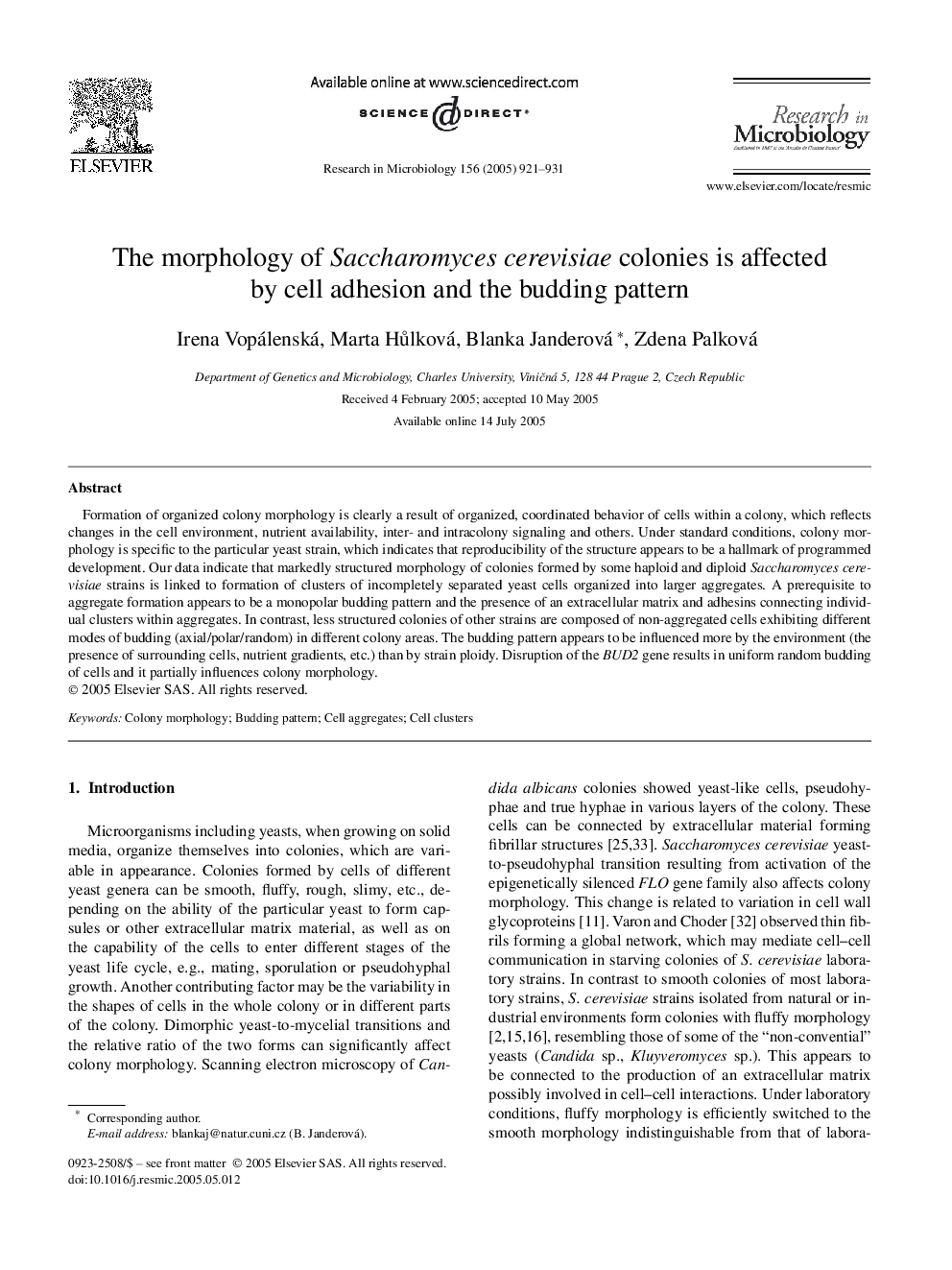| کد مقاله | کد نشریه | سال انتشار | مقاله انگلیسی | نسخه تمام متن |
|---|---|---|---|---|
| 9439849 | 1300502 | 2005 | 11 صفحه PDF | دانلود رایگان |
عنوان انگلیسی مقاله ISI
The morphology of Saccharomyces cerevisiae colonies is affected by cell adhesion and the budding pattern
دانلود مقاله + سفارش ترجمه
دانلود مقاله ISI انگلیسی
رایگان برای ایرانیان
موضوعات مرتبط
علوم زیستی و بیوفناوری
ایمنی شناسی و میکروب شناسی
میکروبیولوژی و بیوتکنولوژی کاربردی
پیش نمایش صفحه اول مقاله

چکیده انگلیسی
Formation of organized colony morphology is clearly a result of organized, coordinated behavior of cells within a colony, which reflects changes in the cell environment, nutrient availability, inter- and intracolony signaling and others. Under standard conditions, colony morphology is specific to the particular yeast strain, which indicates that reproducibility of the structure appears to be a hallmark of programmed development. Our data indicate that markedly structured morphology of colonies formed by some haploid and diploid Saccharomyces cerevisiae strains is linked to formation of clusters of incompletely separated yeast cells organized into larger aggregates. A prerequisite to aggregate formation appears to be a monopolar budding pattern and the presence of an extracellular matrix and adhesins connecting individual clusters within aggregates. In contrast, less structured colonies of other strains are composed of non-aggregated cells exhibiting different modes of budding (axial/polar/random) in different colony areas. The budding pattern appears to be influenced more by the environment (the presence of surrounding cells, nutrient gradients, etc.) than by strain ploidy. Disruption of the BUD2 gene results in uniform random budding of cells and it partially influences colony morphology.
ناشر
Database: Elsevier - ScienceDirect (ساینس دایرکت)
Journal: Research in Microbiology - Volume 156, Issue 9, November 2005, Pages 921-931
Journal: Research in Microbiology - Volume 156, Issue 9, November 2005, Pages 921-931
نویسندگان
Irena Vopálenská, Marta Hůlková, Blanka Janderová, Zdena Palková,